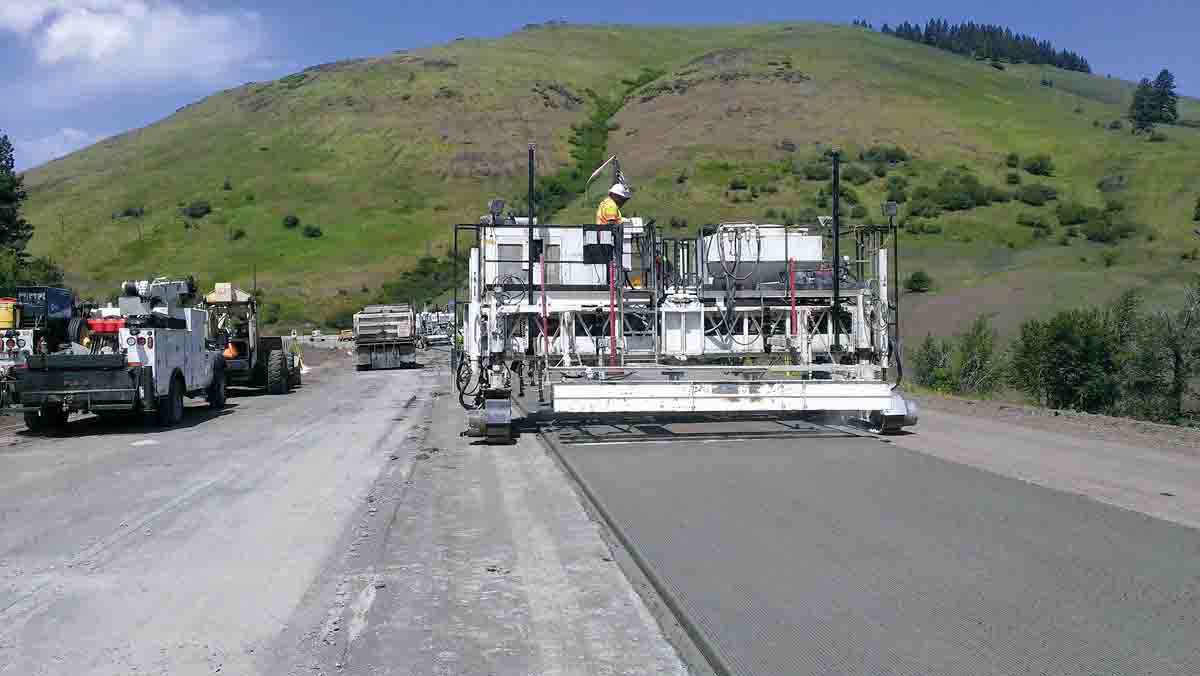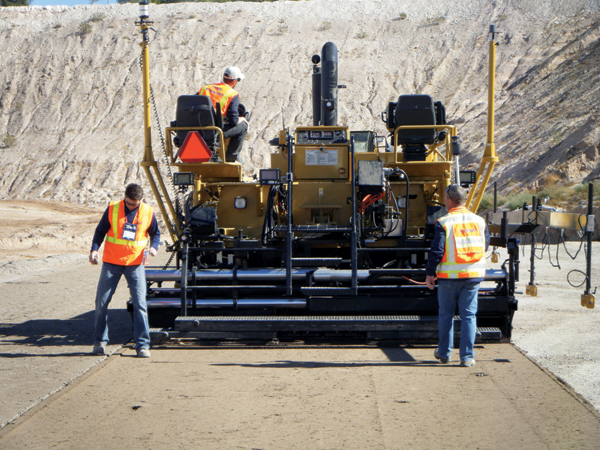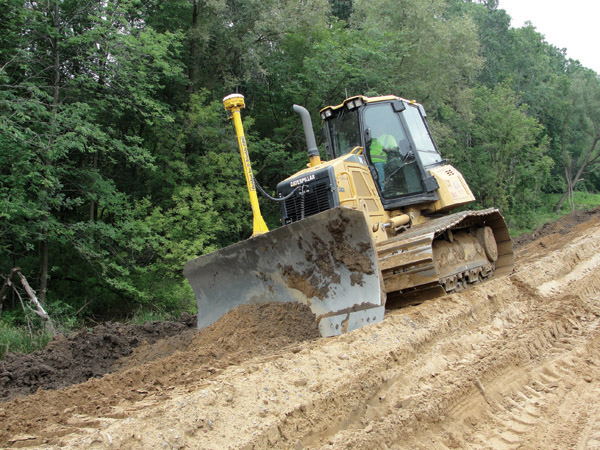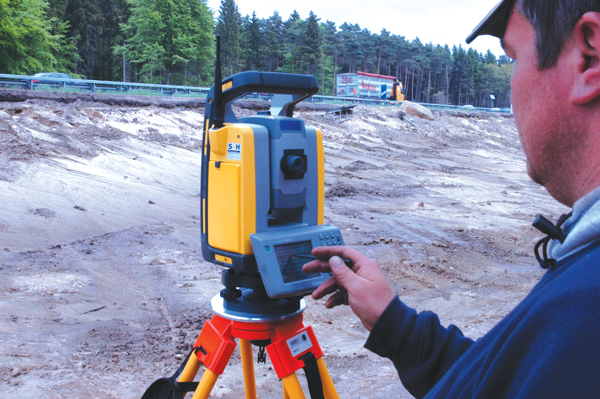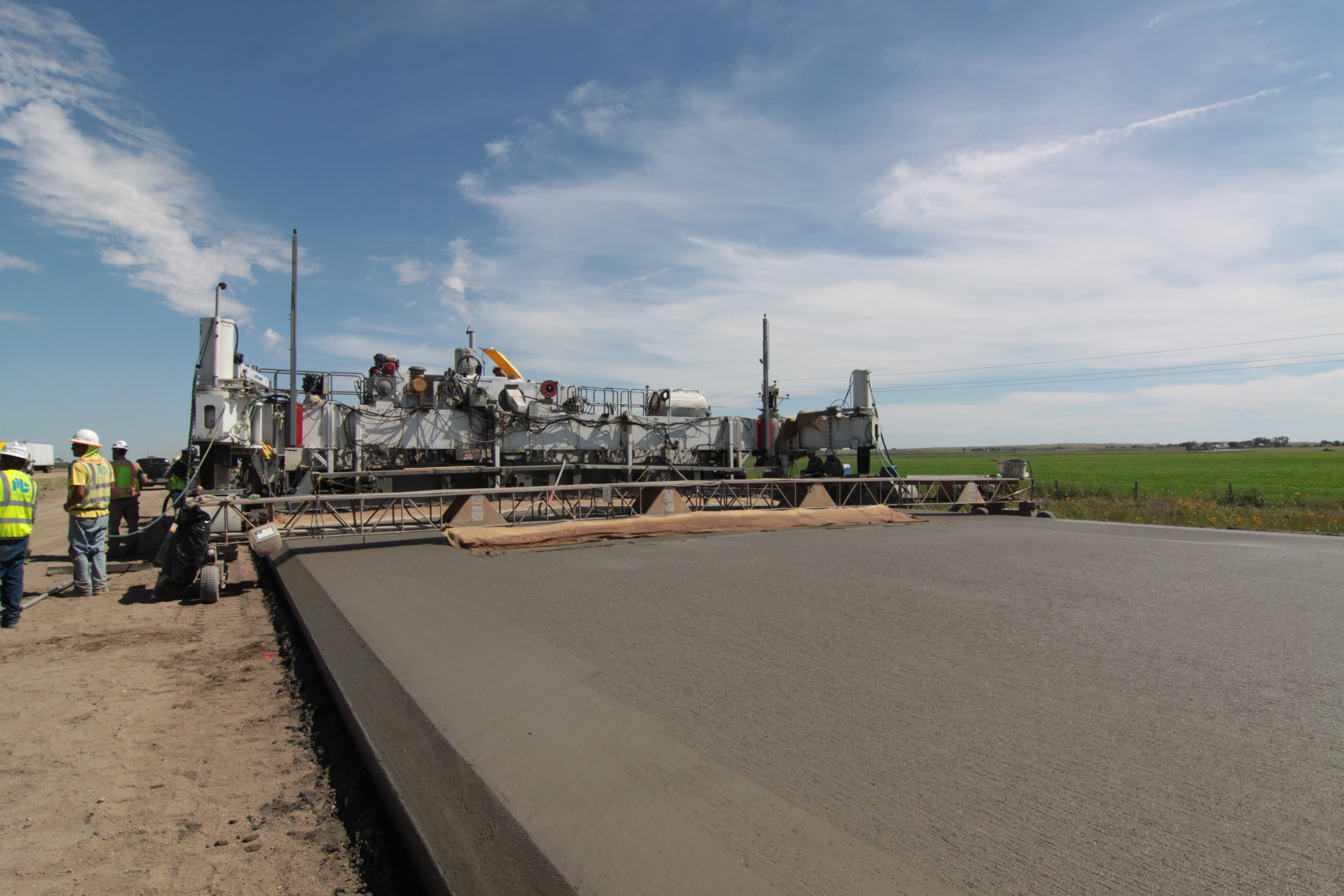The use of sophisticated machine control technology has helped halve the schedule required for a road contract – Jeff Winke. By using the latest machine control systems on the equipment fleet, a US contractor has managed to halve worker hours, machine time and overall costs. “We chopped 50% off the contract schedule,” said Jim Swenson, licensed professional land surveyor for Oregon Mainline Paving based in McMinnville, Oregon. “The project was completed a year ahead of the two-year schedule,” he explained.

A milling machine mounted mast received the position signals from the Total Station
The use of sophisticated machine control technology has helped halve the schedule required for a road contract – Jeff Winke
By using the latest machine control systems on the equipment fleet, a US contractor has managed to halve worker hours, machine time and overall costs. “We chopped 50% off the contract schedule,” said Jim Swenson, licensed professional land surveyor for Oregon Mainline Paving based in McMinnville, Oregon.“The project was completed a year ahead of the two-year schedule,” he explained. “We finished the project so quickly due to long hours of hard work and our use of machine control technology.”
The work has entailed milling and repaving 30.4km of I-84, Baldock Slough - South Baker Interchange section located in Baker City, Oregon. The
But the I-84, Baldock Slough - South Baker Interchange project came with challenges. “ODOT has implemented different surfaces for the fast and slow lanes on two-lane interstates,” Swenson said. “The fast lane has an asphalt finished surface while the right-hand lane is concrete, plus there are asphalt shoulder lanes flanking both lanes.”
ODOT removed the existing road surface profile but did not copy that surface exactly. Instead of going all the way down to subgrade and building it back, ODOT required Oregon Mainline Paving to grind off the existing asphalt to establish the bottom for the new road surfaces. Swenson explained that in the concrete lane, the firm was milling 203-254mm. But in some short bridge sections, milling went down to 305mm. For the fast lane surface the contractor was milling 50.8-127mm, while the fast lane shoulder was milled from 0-50.8mm, and the slow lane shoulder called for a 76mm grind. As a result, the firm cut to four different depths of asphalt ground across the road section.
To handle this complex milling project, Oregon Mainline Paving purchased a new
The technology on a mill machine is designed to control the cutting depth of the mill to minimise over-cutting, create a smoother surface, and reduce the need for additional asphalt or concrete material in the ensuing repaving process. Oregon Mainline Paving received a site model and design information from ODOT, which SITECH Oregon converted into a 3D model using Business Center- HCE. This completed the data preparation for the Trimble machine control and site positioning systems. “We were confident that the Trimble technology would save us a year of production,” Swenson said. “When we met with the ODOT officials at the beginning of the project, they said. ‘We were hoping someone would bring in machine control but we're looking at your timetable, and there's no way you're going to get this done in a year’ and we said, ‘Yeah, we are.’"
The ODOT officials’ response was that all Stage I work had to be completed by July 4th before commencing on Stage II work.
Stage I was to construct crossovers at the ends of the projects and the three interchanges that cross the 30.5m wide earthen median. This placed traffic travelling both directions temporarily on the eastbound side. At the incline at the south end of the project an additional temporary passing lane was constructed. The crossovers required a stone embankment 610mm below the existing ground with geotextile fabric under the stone embankment. The crossovers were then brought to grade and paved. The earthwork was performed using dozers equipped with dual-mast Trimble GCS900 Grade Control Systems and GPS RTK equipment. Stage I work started in March and was completed by April 20th.
Stage II grinding of the eastbound freeway began on April 21st and was completed on May 18th, except where the interchange traffic crossed the existing surface. The interchanges required two crossovers to be constructed for each on- and off ramp, so traffic could be switched onto the poured concrete lane after it had cured. Then, the blockout was ground and white paved.
After the white paving was complete the remainder of the eastbound side was paved, traffic switched back to the Stage I configuration and the crossovers were torn out and reconstructed to accommodate traffic being on the westbound freeway and crossing the under construction eastbound freeway. This work had to be complete by July 4th.
Oregon Mainline Paving began grinding the eastbound freeway on July 6th and finished grinding the eastbound freeway on August 9th. The company completed the 15km in 24 days of grinding. Paved concrete and asphalt were placed using Blaw Knox 220 and 5510 pavers.
Oregon Mainline Paving met the September 30th top-lift paving cut-off date set by ODOT for the State of Oregon. Other items completed during this time were the construction of sleeper slabs and concrete anchors, guardrail, barrier, striping and signing.
This was a non-typical large scale ODOT project where a completely different finished surface was accomplished by milling the existing 355.6-406.4mm road surface, leaving enough existing asphalt to be the top of the 127- 152mm base for the new concrete and asphalt surface. The project called for 52,240m3 of grinding and 122,000tonnes of ground asphalt.
The cross section of the 12.8m wide final roadway has four different depths from the finished surface. A 50.8mm deep by 1.83m wide fast lane shoulder, a 152mm deep by 3.68m wide fast travel lane, a 228.6mm deep by 4.27m wide slow travel lane and a 76mm deep by 3.05m wide slow lane shoulder.
The challenge for Oregon Mainline Paving was how to control the milled depth to a 6.1mm vertical tolerance, stay on line at the different depth offsets while using a grinder with a 2.13m wide drum. The cross section required the grinder to make nine passes across the roadbed. It could have been completed in seven passes, but two additional passes were required in the 228.6mm deep section.
“We wanted to grind from the lesser depths to the deepest so we wouldn’t leave ground asphalt behind,” Swenson said. Carrying out this milling task over a 15.2km project, 30.4km of roadway, with additional milling to 305mm depth in the concrete portion at the starting end and the bridges for the sleeper slabs and anchors was definitely a challenge.”
Once the milling was completed, Oregon Mainline Paving used 55,924tonnes of asphalt as well as concrete to pave the road. “It was tremendously important to have an accurate milled surface for the paving,” said Swenson. “Our pay depends on the IRI (International Roughness Index) score, which Oregon requires a score of 45. On this project, we were significantly below that mark at 35.”
He said that ODOT also has a zero-out-of-tolerance expectation and measures concrete depth randomly, but always within a 60.96m section. The concrete subcontractor had estimated a 3% overrun, but actually hit 1% and ODOT was very pleased with the results.
The project is completed and the I-84, Baldock Slough - South Baker Interchange section of the one-time Oregon Trail is handling traffic.
Swenson commented, “This was our first job where we used a robotic total station with machine control. I’m impressed with how efficient the Trimble Universal Total Stations were and how well they worked. That’s an incredible amount of grinding which we completed accurately with the help of the technology. Our schedule was a bit of a grind, pun intended, but we finished the project in half the time, which was incredible.”



